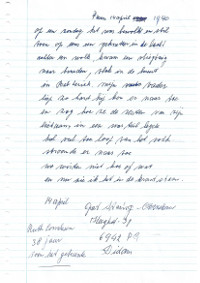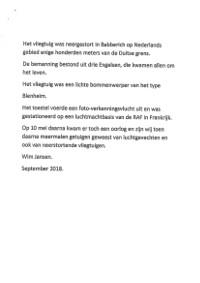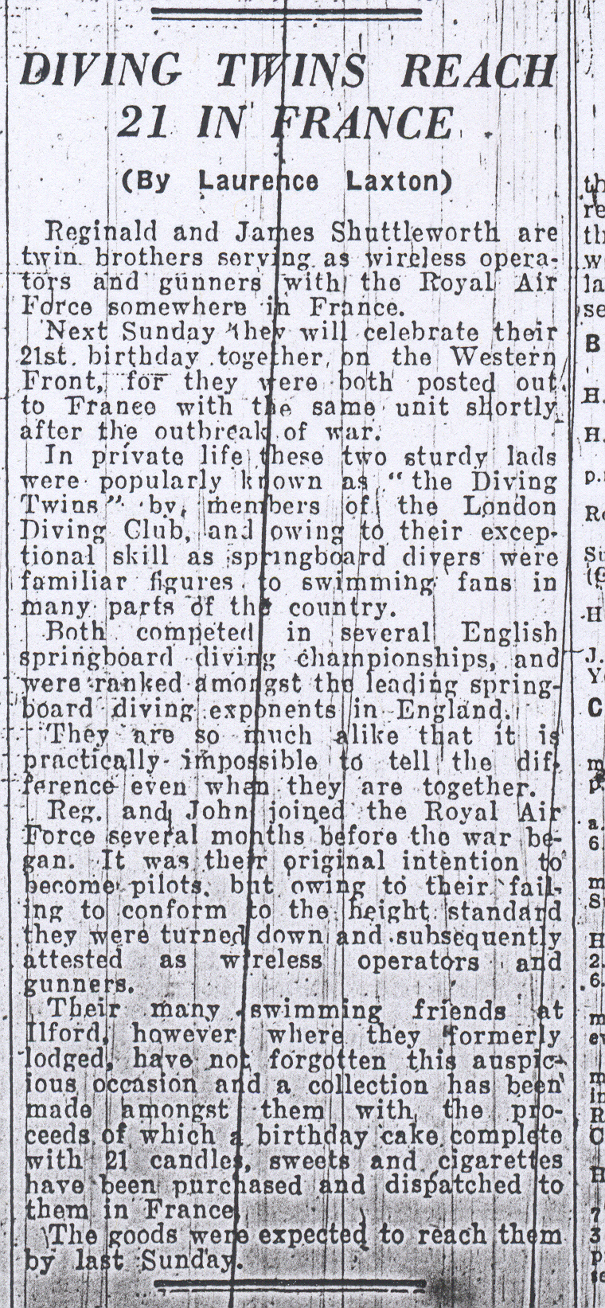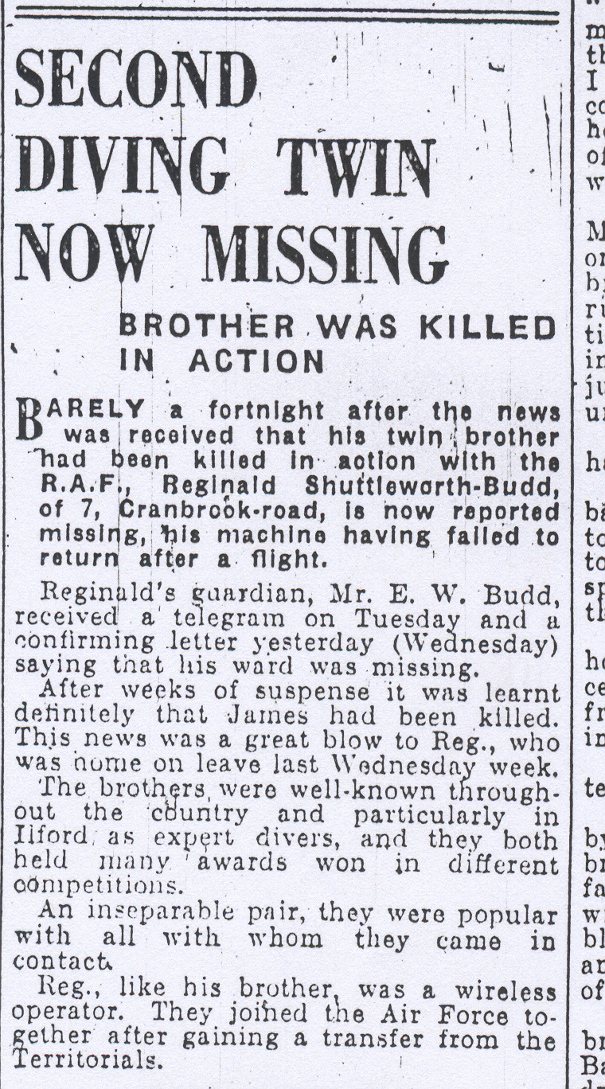The Airbattle at Babberich
Eye Witness - Annie van Bindsbergen
 |
| English Transcript |
Eye Witness - Vim Jansen
 |
 |
| English Transcript |
Eye Witness - JH van Bindsbergen
“It was Easter Monday April 14 1940. I saw an airplane, that was being chased by German ‘hunters’ (airplanes), coming out of a cloud while on fire. It was spiralling right towards our house. If it hadn’t turned 90 degrees in the air it would have landed on my roof” according to an inhabitant (J.H. van Bindsbergen) of Babberich.
A British bombing airplane has crashed while burning on Dutch territory in the direct vicinity of Babberich last Sunday as mentioned before. The plane had been caught in air combat, for as far as could been seen, on German territory but ended up crashing on Dutch territory.
It must have been a quarter past four when the inhabitants of Zevenaar and Babberich were frightened by the vast noises of the airplanes and heavy gunfire. When they exited their houses, they saw two airplanes coming from the east being chased by four other airplanes. When the airplanes came into closer range it became apparent that the two airplanes were British and of a heavy type, and that they were being chased by four lighter German airplanes. The airplanes were flying in big circles in the sky above the boarder area when suddenly three out of the four airplanes started to attack one of the English airplanes. The English airplane responded by ascending into the clouds to look for refuge while instantly being chased by one of the ‘hunter’ (see above Chrissy for explanation) airplanes. In the meantime high gunfire was taking place. Not a minute later the burning English airplane was rapidly descending out of the clouds. The inhabitants of the Babberich area, which is only about 500 meters from the border, had followed the battle in fear, mostly because of the imminent danger of one of the airplanes crashing on their houses. Some had fled to their basements. The burning English airplane spiralled down producing a heaving smoke cloud. With tremendous force it crashed before the house of the family Van Bindsbergen in the meadow of milk driver Jansen. The engine and the cockpit with the landing gear crashed deep into the swamp-like ground. The hole, which the machine created in the meadow, had a length of more than 10 meters. The heavily burning airplane remained on the ground scattered entirely.
Mr. Van Bindsbergen saw the airplane, which must have exploded already in the air, crash in the meadow before his house. The crew consisted of three Englishmen, who died. The casualties have later been buried on the cemetery of Moscowa in Arnhem. They were: F/O H.G. Graham Hogg, pilot, age 27 Sgt. J.R. Proctor, observer, age 26 A/C Man 1st Class J. Shuttleworth, WO/AG, age 21
Caption with picture: After a heavy air battle between British bomber planes and German hunter planes, in the vicinity of the Dutch border, a British bomber plane crashed burning near Babberich. During which the head of the plane and the enginges penetrated the soil about 3 meters deep.
During the digging of a ‘trench’ in May of 1973, for the construction of a gas pipe, wreckage had been found of an, in 1940, crashed British airplane in the meadow alongside the Beekseweg (Beekse street).
Mr. K. Lusink of the D.A.E.G, who made a study out of the different airplane types, informed the authorities that this plane was a two engine light English bomber airplane type Blenheim MK IV. It was a plane of the 57 SQ RAF with serial number L-9465. The plane was making an aerial photo expedition and was stationed on an air force base of the RAF in France.
Caption with picture: Two inhabitants pose proud by the found airplane
Caption with picture: Under large attendance by the public and military, the bodies of the English airplane crew, which crashed at Babberich, were buried in Arnhem. The procession, led by a honorary military escort, on their way to the cemetery.



